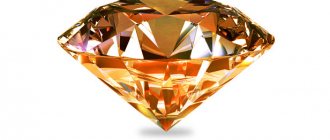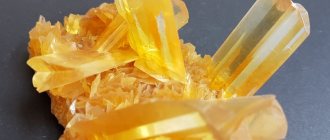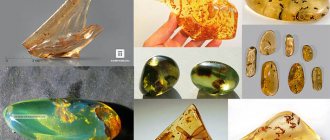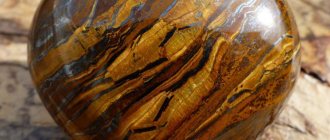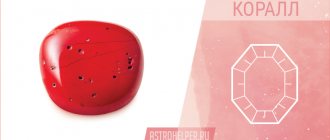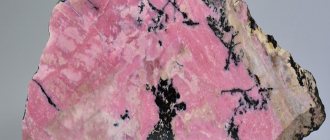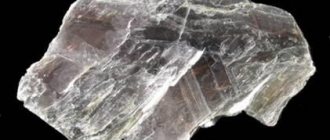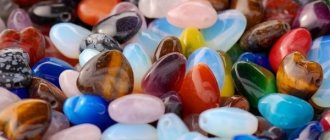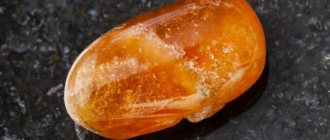History and origin
The first description of natural amber dates back to the 10th century BC. The priests of Ancient Egypt used organic stone for mummification, created incense burners from it, and performed the ritual of embalming the pharaohs.
Amber
In Rome, jewelry was made from the solar mineral for patricians. Greek warriors took products made from electrum (that’s what they called amber, translated as “shining”) as an amulet for battle. The healing properties of the stone were described by the great Hippocrates and Avicenna. Pliny and Biruni discovered the beneficial effects of the mineral on children.
Ancient peoples considered amber to be alive, animate, and associated it with protection and victory. Today, the magical properties of natural amber are in demand as a tool to counteract dark forces or improve human health.
The peak of popularity of amber accessories occurred in the 17th century. The most famous creation made of amber is the Amber Room from the chambers of Russian autocrats.
Transparency of amber
The most transparent stone is “ batter ”, this mineral, transparent as a tear, often has a golden honey color. The most beautiful jewelry is made with it. Its sunny color will elevate even the simplest decoration.
Topic: How can amber help?
The next most transparent variety is “ bastard ”. The stone is translucent and resembles drops of honey in appearance.
Smoky or milky amber is even less transparent. More precisely, it is not transparent at all. But, despite this, it is one of the most popular types of stone, because it has beautiful landscape patterns.
Differences in amber by color - smoky amber
Royal amber , which has a noble ivory shade, is the most valuable of the succinites. Products made from it were also worn by Egyptian pharaohs. The most expensive jewelry is made from this stone.
Differences in amber by color - royal amber
Physicochemical characteristics
Amber is the hardened resin of coniferous trees. This is an amazingly beautiful stone of natural origin: its physical characteristics differ from other organic minerals.
| Formula | C10H16O+(H2S) |
| Color | Light yellow, brown, red, milky white, greenish |
| Shine | Smolyanoy |
| Transparency | Variable: from almost transparent to completely opaque |
| Hardness | 2-2,5 |
| Cleavage | Absent |
| Kink | Conchoidal; viscous (becomes brittle with aging) |
| Density | Typically 1.05-1.09, maximum 1.3 g/cm³ |
Inclusions: insects (and not only) in amber
Of course, for paleontologists, amber is not of jewelry value at all. It provides an absolutely fantastic opportunity to see with your own eyes living creatures that lived on Earth tens of millions of years ago.
The resin flowing from the trees captured plant debris, pollen, fungal spores, cobwebs, hair, and feathers. Spiders, insects and snails got stuck in it, and sometimes small vertebrates got caught in the resin trap. Inclusions are the name given to the remains of flora and fauna encased in amber. These findings are so amazing that they formed the basis for Michael Crichton's novel Jurassic Park, and a series of films based on it.
Findings of whole bodies of vertebrates or their fragments in amber are known. Scientists have lizards, snakes, frogs, birds, even the tail of a small dinosaur at their disposal. So maybe the day is not far off when they can be cloned and brought back to life? Unfortunately this is not possible.
What we see in amber are mummified skeletons and outer coverings of animals, or chitinous shells. The resin and the organic acids and esters it contains destroy soft tissues and destroy the contents of cells. Attempts to extract DNA from insects contained in copal no older than 10 thousand years old have been unsuccessful. Even in insects, only small fragments of DNA remain in young resin clumps that are about 60 years old. So, apparently, we will have to say goodbye to the idea of bringing “Jurassic Park” into reality.
But this does not mean that such finds are useless. Each opens a window into the world of the distant past and provides more information than fossilized remains. This is especially true for vertebrates, because amber preserves what is missing in fossils - integumentary tissue and appearance.
Varieties and colors
It is not without reason that amber is called the sun stone. Its classic color scheme is yellow-brownish. There are other shades and types of mineral. The structure and color of amber were created by natural factors of the period when conifer resin flowed onto the soil. From it the organic mineral was formed. The longer the pebble was in the sun or air, the brighter it is.
Colors
Gemologists and mineralologists have classified more than 300 colors and shades of gems - from white to black:
- yellow-brown is the most common;
- orange;
- red or the color of ripe cherry - called “dragon’s blood”, similar to a ruby, very rare, expensive;
- white - actually yellowish in color, the illusion of white color is created due to bubble inclusions;
- green - the color of the stone comes from sulfur pyrites or algae;
- colorless - transparent waxy mineral;
- blue - Dominican amber;
- black - dull-opaque, also known as jet.
Amber resin sometimes contains the remains of flora or fauna. Such inclusions increase the value of the stone. If the insects in the resin are larger than a centimeter, their owner can be considered rich.
Kinds
Minerologists divided amber into types. Each has different characteristics and features:
- bokkerite - a dense, elastic, opaque caramel-reddish gem;
Bokkerit - Glessite is an opaque brown stone with a minimum of impurities;
Glessite - gedanite - yellow, due to its fragility, processing of the mineral is impossible;
Gedanite - kissellite - yellow, olive, green agglomerates;
Kiscellite - kranzite - unripe amber;
Kranzit - stantienite - fragile, opaque black-brown stones;
Stanthienite - succinite - dark brown with a rich yellow center, the most common, high-quality type, characterized by a high percentage of succinic acid; recognized as a jewelry variety;
Succinite - shraufite - yellow-red, red color.
Shrawfit
The variety intermediate between succinite and gedanite is called “rotten” (some people ignorantly call gedanite this way). “Naked” amber stands out - a dense, unweathered stone, polished with sand from the bottom of the sea. Retained the original color or darkened a little, becoming reddish. The value of amber is influenced by the degree of transparency. It is due to different concentrations of microvoids in the mineral.
Formally, amber is an ornamental stone, but it is pleasant to look at.
Where is amber mined?
As before, amber is mined at sea through large nets.
Before talking about the variety of shades of this semi-precious stone, it is worth mentioning its deposits. The history of amber mining goes back many hundreds of years; this mineral was popular back in the second millennium BC. Descriptions of jewelry can be found in ancient Roman poems, an example of which is Ovid’s Metamorphoses. The largest amber deposit is located in Russia in the Kaliningrad region, this is the only place in the world where the mineral is mined on an industrial scale. Extraction is carried out by the so-called open method, when the stone is obtained by washing the earth under a powerful stream of water. The Russian deposit accounts for 80% of global production.
Modern technology helps to extract amber faster and more, but the principle of operation has not changed for many years
It is noteworthy that half of the deposit is located in Poland, but is hidden at great depths, so production is not carried out there yet. During the Soviet period, Kaliningrad amber was very popular. The Baltic deposits are the most valuable in the world in terms of the quality of the stone they produce.
Amber is not always found in cold water, even though it is the second most produced in the world
The famous Amber Room was once made from Baltic amber.
Other amber deposits are not so large and are located in the USA and Canada; in Asia, amber is mined in Japan, Burma and Thailand; European deposits are in France, Ukraine, Italy and Romania. The mineral is also mined off the coast of South America - in the Dominican Republic. In terms of value and mass production, Dominican amber ranks second in the world, second only to Baltic amber. And it is in the Dominican Republic that rare types of stone are mined - blue and green amber.
Dominican amber untreated
There is a huge difference in inclusion composition between Baltic and Dominican amber. Baltic specimens most often contain insects. In the mineral of Dominican origin, inclusions are found much more often, in almost every piece. The sizes are also excellent - the average piece of Dominican amber is the size of a good chicken egg. But, despite the fact that the average stone mined in the Dominican Republic is larger than in other places, the largest amber was once discovered in Burma.
One of the largest pieces of amber. Weight 9 kg
Medicinal properties
The healing properties of amber and who can benefit from wearing it were discovered by healers thousands of years ago. It has been established that the mineral is able to overcome any pathology and will be useful for the body of a healthy person. The beneficial properties of natural amber manifest themselves in different cases:
- The stone improves brain function.
- Optimizes metabolic processes in the body, therefore it is used in the fight against excess weight.
- Used to prevent or combat colds.
- For respiratory problems, amber in a necklace or brooch is suitable.
- Earrings with green mineral improve hearing and vision.
- Short beads made of unprocessed amber are useful to wear for pathologies of the thyroid gland.
- Wearing amber body jewelry (pendant, bracelet, beads) relieves skin rashes.
- For the treatment of hepatitis, gastrointestinal tract, cardiovascular, and nervous systems, take a green stone.
It is effective to use bracelets, necklaces, and rings for treatment. Jewelry with a stone will make a healthy person more cheerful and optimistic.
The healing properties of the stone apply to everyone; there are no contraindications. But if during treatment there is dizziness, discomfort, tingling at the application sites, the stones are removed.
The properties of amber are most convincingly demonstrated by dark, medium-sized minerals.
Healing properties
Ancient doctors believed that the sun stone was capable of healing any disease. The methods used for treatment came to us from antiquity. Some information has been lost, but many of the secrets of solar gem healing are still used by lithotherapists today.
Only natural amber can heal a patient.
Having absorbed the power of the earth, the mineral will share it with its owner, cleanse his aura and heal the body.
Amber pendants
How amber can help:
- Weight control. Regularly wearing jewelry with this stone activates metabolism, triggering fat burning. And if you combine it with regular training, the effect will be simply amazing!
- It is believed that the stone neutralizes nicotine, which means it reduces the risk of developing lung cancer. But, of course, if you smoke a pack a day, even such a powerful talisman will not save you.
- Baltic “gold” improves well-being. By purchasing jewelry with hardened resin, you can immediately say goodbye to headaches and migraines.
- Another healing property of the mineral is the improvement of varicose veins. Moreover, it not only removes the symptoms, but also helps fight the problem itself.
- The talisman will be a good prevention against colds. And if you do manage to get sick, it will help you cope with a sore throat and its consequences.
- If you wear the stone so that it comes into contact with the skin, you can get rid of dermatological problems. Rashes and allergies cease to bother those who wear amber rings or pendants.
The healing properties of amber make it possible to make elixirs from it. The stone is ground into crumbs, making a healing tincture from it. It is taken for colds and pulmonary diseases.
Magic properties
Alchemists used amber powder to make the elixir of eternal youth. The Slavs wore beads made from the mineral as protection from the evil eye. Crushed stone is still used in churches today to create the desired mood.
The magical properties of the stone are beyond doubt among modern lithotherapists.
- The golden mineral is the embodiment of joy and fun. It pulls the owner out of hopeless melancholy, gives peace, and drives away thoughts of past hardships.
- Black stone is taken on the road to make the trip or business trip easy and successful.
- This same gem sharpens the owner’s intuition and suggests the right decision.
- Amber stone is a woman’s guardian, helping to bear and give birth to a healthy baby.
- Green beads on a red thread are placed in a baby’s stroller or crib from the moment of birth as a shield against the evil eye or trouble.
- The mineral is a powerful home amulet. Protects from the elements, intruders, neutralizes black magic.
- Amber substances restore youth, therefore they are popular among both sexes.
The stone retards the owner’s ailments. The appearance of cracks or other defects means that danger awaits the owner. This is especially important for people in risky professions. Cloudiness signals a person’s illness.
Even the ancient Greeks presented amber items to loved ones or friends as wishes for happiness. This significance of the stone remains today. The gem is worthily appreciated by all people, regardless of age or gender.
A silver ring with jet is considered a talisman for doctors or scientists, copper accessories with black amber - for sorcerers and magicians.
Ring with amber
The raw mineral, especially the black one, is the strongest. Sorcerers are confident in the magic of the gem: it protects a person and the house, repels negativity, and imparts determination.
Simple pebbles are better suited as amulets or talismans.
Place of Birth
The most ancient deposits known to modern historians were located in Jutland (modern Denmark) and in the Frisian Islands off the coast of the Netherlands. There was even a road built there from the Roman Empire, called the Amber Road. It is believed that gems were mined in India, North Africa, near the ancient Peruvian city of Moray, but there is no reliable information about this. Modern deposits are located in temperate climate zones and subtropics.
There are several deposits in Europe:
- Baltic-Dnieper (Baltic coast, Rivne, part of Volyn, Zhytomyr and part of Kyiv regions)
- Carpathian (Eastern Romania and Western Ukraine)
- North Siberian
- Sicilian
In Asia:
- Burmese
- Far Eastern
In America:
- North American
- Caribbean (Dominican)
- Mexican
- Brazilian
In Russia, it is mined in the Kaliningrad region, near Lake Baikal, in the Far East and Siberia. Among European countries, the leading countries in the production of this mineral are Poland, Lithuania and Ukraine, partly Germany, the Netherlands and Denmark.
Who is suitable according to their zodiac sign?
Amber and some zodiac signs are especially friendly. But this semi-precious solar stone suits almost everyone's horoscope.
If the stone is contraindicated according to your zodiac sign, astrologers advise wearing jewelry made from pressed or carefully processed material. The magical properties of such amber are weaker.
| Zodiac sign | Compatibility (“+++” – fits perfectly, “+” – can be worn, “-” – strictly contraindicated) |
| Aries | + |
| Taurus | — |
| Twins | + |
| Cancer | + |
| a lion | +++ |
| Virgo | + |
| Scales | + |
| Scorpion | + |
| Sagittarius | + |
| Capricorn | + |
| Aquarius | + |
| Fish | + |
(“+++” – fits perfectly, “+” – can be worn, “-” – is strictly contraindicated)
Application area
Amber raw materials are used in various industries: jewelry, arts and crafts, and industry. The distribution is influenced by the assessment of amber according to its main characteristics.
Jewelry
The main area of application of the mineral. A jewelry stone in jewelry ideally complements silver, gold or platinum, as if “warming” precious but cold metals.
The properties of amber make it unsuitable for automatic operations; jewelry or products are made manually. Granite is rare; more often the processing is minimal, in the form of cabochons or soft fantasy shapes.
Silver jewelry with light stones suits a young girl. Cognac-honey, cherry or brownish specimens in gold are an attribute of a mature lady. A black stone in a white frame is suitable for men.
Silver earrings with amber
The cost of amber allows you to assemble a set of jewelry according to the type or color of the stone.
Arts and crafts
Mineral fragments are pressed into agglomerates used in art. Designers and stone-cutters create products of any size and complexity of processing. People are happy to buy sculptures, boxes, ashtrays, chess, watches, and dishes. Gizmos perform utilitarian and aesthetic functions.
The use of amber is waste-free. Amber multi-colored crumbs are used to “paint” paintings and icons. The rich color scheme of stone fragments, especially the yellow range, allows for accurate paint rendering.
Other areas
The mineral is present in medicine (medicines, medical devices). In industry, it is used to produce excellent insulating material, enamels, and components of chemical complex products. Amber raw materials are purchased by agriculture.
Price
The price of amber is calculated per gram. The cost is determined by the type, quality, weight of the stone ($5–97 per gram). More valuable than others are thick reddish, blue, and green amber. Yellowish or pressed specimens cost no more than $16 per gram.
Rosary from amber
This is a raw material for jewelry or ordinary souvenirs. The price of paintings depends on the size and amount of material (from 1.2 thousand rubles). For individual works of authorship they ask for 110–140 thousand rubles.
Application
Amber is used in various fields
Archaeologists even find amber products in the sites of primitive people. People have been using this beautiful and pliable material for more than 10,000 years. Now it is used in the following areas:
- Jewelry and decorative arts
- Industry
- Medicine and pharmaceuticals
- Wood processing
Art and jewelry
Treated or natural amber is not a gemstone, but it is popular among jewelers. Jewelry, dishes, and decor are made from it. The most famous decorative work is the Amber Room in St. Petersburg.
Amber products and jewelry are easy to find in any jewelry store. There is a large selection in Poland, Lithuania (in the cities of Druskininkai, Kaunas), Ukraine, where souvenirs are considered part of the national tradition. Prices largely depend on the quality of the gems and the material of the frame. For example, earrings in yellow metal with a small stone cost 500-600 rubles, bracelets - 700-800 rubles. The same products in silver cost 1000-3000 rubles, and in gold – from 8000 rubles. A ring, ring or brooch has approximately the same cost.
Industry, medicine and wood processing
The hardened resin is used to produce succinic acid. It is used for the production of medicines and food additive E363. The substance is used in agriculture, as a fertilizer for plants and an additive in animal feed.
Amber varnish, which is obtained by dissolving production residues in benzene, is used to bind particles in sandpaper, as an insulator.
Amber is a good electrical insulator. Even in the last century it was used in X-ray meters. Now the material is being replaced by artificial polymers.
To treat wood, amber varnish was used to cover the bottoms of ships to prevent seawater damage, barnacle build-up, and also on musical instruments. For example, the secret of the Stradivarius violin is in the special composition of the varnish with the addition of amber powder. This coating is still used in the production of expensive professional violins, cellos, and for coating exclusive furniture.
How to spot a fake
The market is filled with amber of varying quality and origin.
Types of imitations
The raw material for the production of amber assortment is artificial or natural material, very similar to a real gem.
The highest quality imitations:
- copal - fossilized resin of peas, beans, chickpeas, and other legumes;
- Bernite is a coarse amber powder bonded with epoxy resin and heat-treated.
dug
Visually, the falsification copies a natural gem.
Identification rules
The origin of a sample can be determined by the following characteristics:
- natural stone has a rich color;
- natural mineral feels warm and pleasant to the touch;
- real amber does not smell (fake amber may have a forest or herbal aroma);
- when heated, the natural mineral emits a light pine or clove smell (the imitation smells like a pharmacy);
- natural stone rubbed on clothes attracts threads, paper, ashes, hair;
- an amber piece floats in salt water, and sinks in fresh water;
- amber glows under ultraviolet light;
- Only fakes made from young resins will have a needle mark on the surface.
Organic formations contain round air bubbles inside (in the fake they are elongated), their shade changes smoothly (in the imitation they are clumps of contrasting inclusions).
If it is difficult to distinguish a fake on your own, it is better to contact an expert. Especially when purchasing large or expensive items.
How is amber formed?
If the resin begins its transformation into amber on land, in conditions of high humidity, then it ends at the bottom of the reservoir.
A layer of sediment containing fossil resins can be eroded by water currents and transported to the bottom of a large lake or sea basin. In the Eocene, the lower reaches of the Eridanus River were flooded by sea waters. Rising sea levels turned the wide river into a long sea bay, stretching through Denmark to the modern Baltic states. Here, the bottom waters formed an alkaline environment with a high content of potassium and fine silt. This contributed to the appearance of succinic acid and esters in the fossil resin, and completed the process of polymerization of molecules. And the silt masses, mixed with clay, turned into a greenish-gray mineral, glauconite. Millions of years will pass, and glauconite geologists will determine the presence of amber accumulations in sedimentary rocks.
Long sand spits and shallows formed in coastal areas, and when the sea receded, pine trees grew in this place, dropping precious resin. This is how layered amber-bearing deposits of the Baltic region were formed.
A new stage in the life of Baltic amber began with the advent of glaciers. About 700 thousand years ago, the ice sheet covered Fennoscandia in a single massif, burying the Eridanus Valley. The weight of the ice mass was so great that the earth's crust bent, forming a depression. And with the end of the last ice age, 14 thousand years ago, this depression began to fill with water. Over time, the glacial lake became a sea. Its waters eroded amber-bearing deposits, reburying the amber on the seabed and sometimes, during storms, bringing it ashore. Primitive hunters, moving north following herds of deer, found beautiful red stones on the shore. They made jewelry from amber and exchanged it for obsidian from the far south. This is how amber became part of human history.
How to wear and care
The mineral is not particularly durable and requires delicate care:
- jewelry or products are stored in durable packaging or a box;
- from falls or impacts, the stone may chip or collapse;
- keep the gem away from metal or sharp products, heating appliances;
- sudden temperature changes have a bad effect on the structure of the mineral;
- amber jewelry is worn when cosmetics and perfumes have been absorbed;
- does not tolerate fat, household chemicals;
- dirty fingers will leave stains on the stone;
- dryness causes the pebble to become covered with microcracks or crumble, so frequent bathing or wet wraps are helpful.
The contaminated gem is immersed in clean or salted water for 15–20 minutes. Soap or chemicals are prohibited. Dry with a soft cloth (a hair dryer or sun will cause the amber to darken or fade).
Amulet from amber
If possible, buy a special cleaning composition. Restoring the shine and richness of amber:
- the mineral is left in salt water overnight;
- air dry for 25–30 minutes in the morning;
- immerse in warm olive oil for soaking for 20–25 minutes;
- take out and polish with a soft cloth.
You can cover the clouded gem with paraffin and tooth powder. Wipe off any dried mixture residue with a soft cloth. The mineral becomes cloudy from harsh ultraviolet radiation; jewelry with it should not be worn in direct sunlight. However, gentle sunbathing is beneficial: amber is recharged energetically and shines brighter. At the same time, the accumulated negative energy goes away.
Organic stone is fragile, you need to wear jewelry carefully (especially a ring or bracelet).
Rules for wearing and care
The fragile mineral requires careful care:
- To store jewelry you need durable packaging or a box.
- Drops and impacts may cause damage or defects.
- Amber should not be kept near metal, sharp objects or heat sources.
- It is advisable to avoid sudden changes in temperature.
- Wearing amber is possible after the final absorption of cosmetics and perfumes.
- It must be protected from fat and aggressive environments.
- Do not touch the stone with dirty fingers.
- The stone should be prevented from drying out.
A dirty stone can be immersed in clean water for a quarter of an hour. You need to wipe it with a soft cloth. If the stone has lost its shine, you can restore its saturation as follows:
- Immerse overnight in salted water.
- Air dry for half an hour.
- Immerse in olive oil for 25 minutes.
- Polish with a soft cloth.
It is acceptable to coat a cloudy gem with a mixture of paraffin and tooth powder. Dry residues are wiped off with a soft cloth. Turbidity is caused by ultraviolet harshness. Minor exposure to the sun will charge the amber with energy and enrich its shine. The sun can also absorb negative energy.
You can buy the gem on the 5th of the lunar cycle. After two weeks you can start wearing it or using it for healing or magical purposes.
Amber has powerful energy. The stone is used in medicine, magic, art and industry. Representatives of any zodiac sign can wear amber talismans and jewelry, but combining it with earth and water stones is not recommended.
